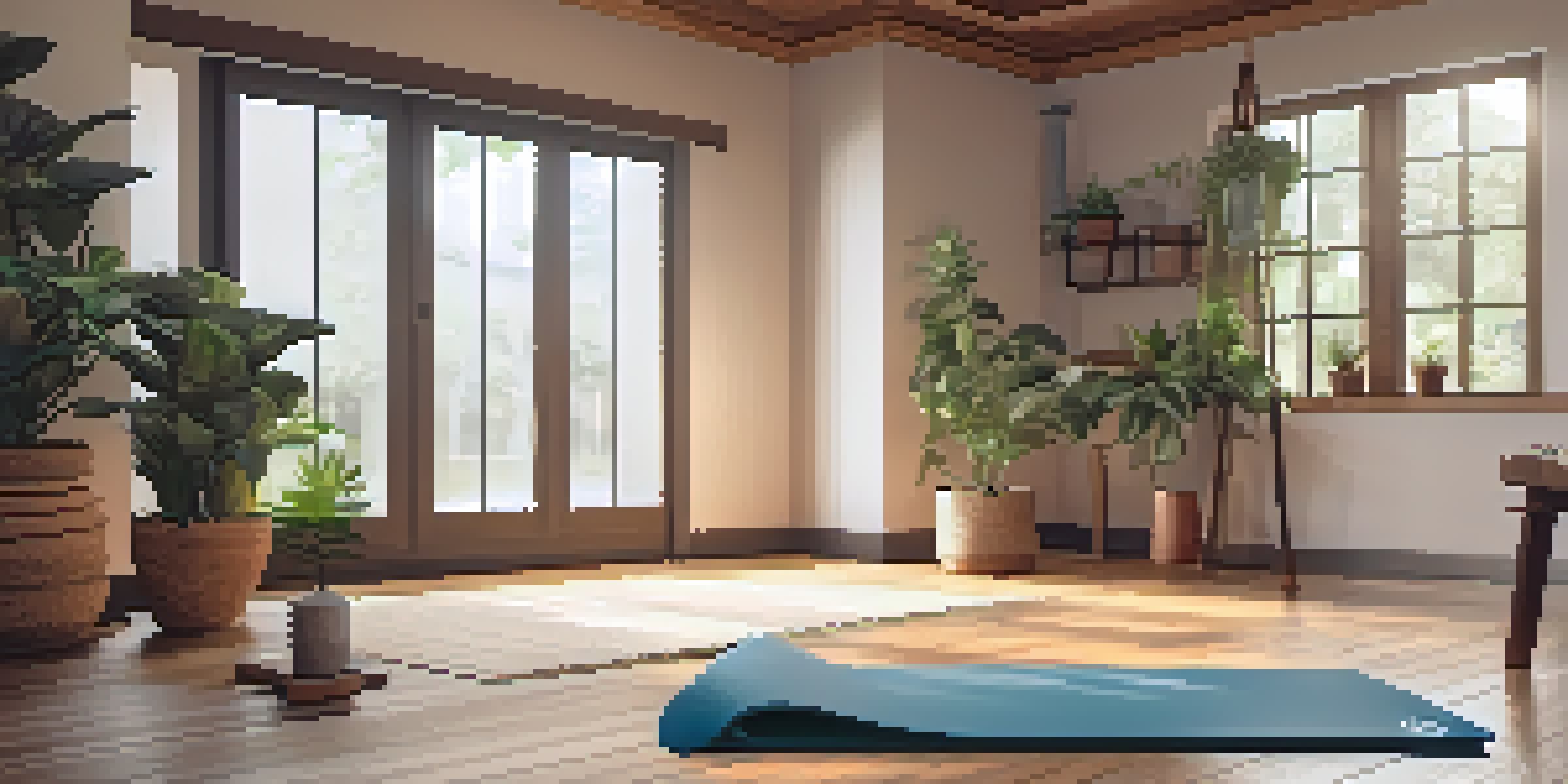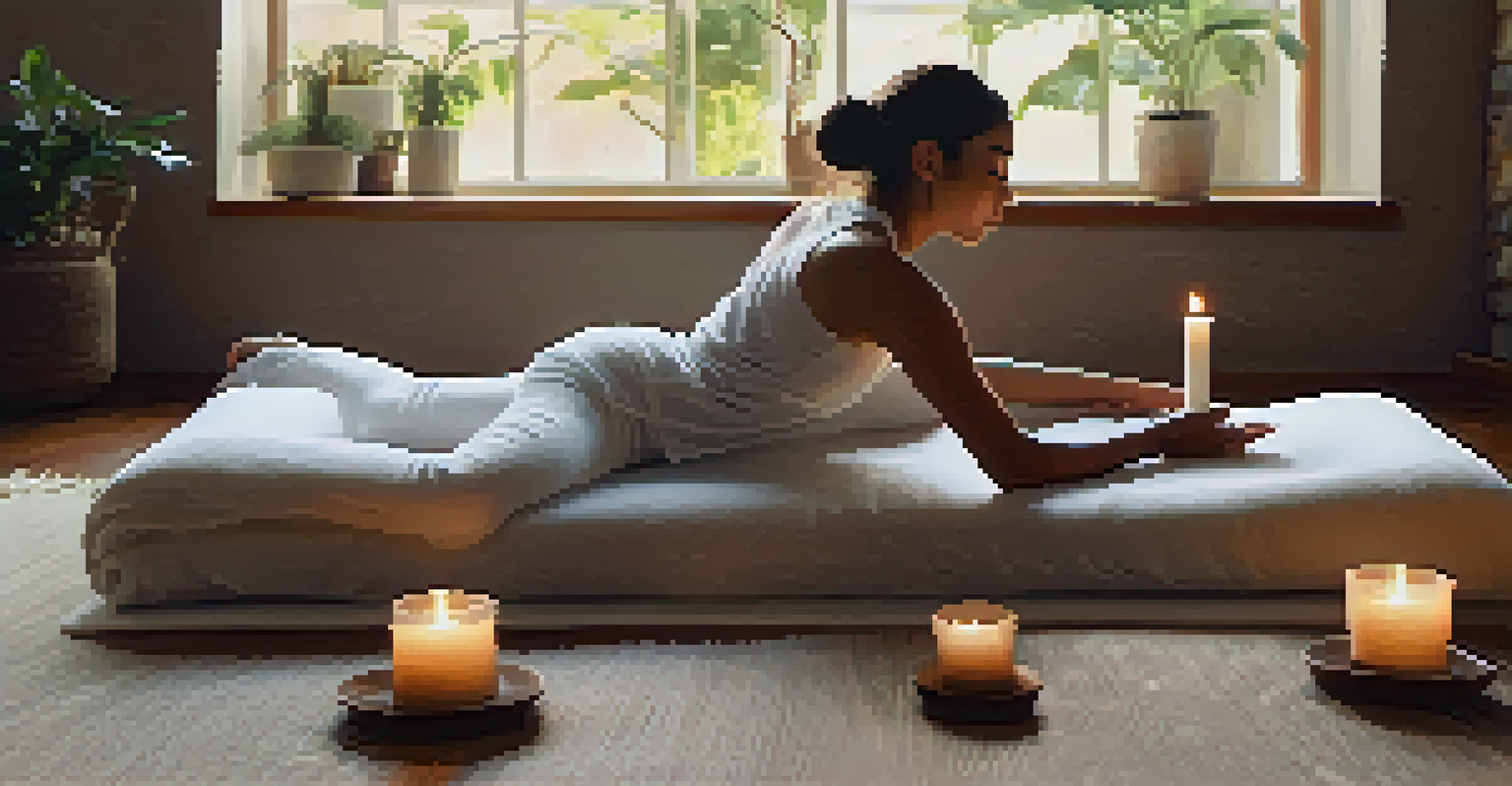Modified Yoga Practices for Enhanced Comfort and Relaxation

Understanding Modified Yoga: What It Means
Modified yoga refers to adapting traditional yoga poses to suit individual needs. This approach prioritizes comfort and accessibility, allowing practitioners of all levels to enjoy the benefits of yoga without strain. Imagine trying to fit into a pair of jeans that are one size too small; modification in yoga is like finding the perfect fit for your body.
Yoga is not about touching your toes, it’s what you learn on the way down.
Many people assume that yoga is only for the flexible or the fit, but that's a misconception. By incorporating modifications, everyone can participate and experience the joys of yoga. It's all about finding what works for you, whether that means using props or adjusting poses.
In essence, modified yoga is an inclusive practice that encourages you to listen to your body and honor its limitations. It’s about embracing your own journey, rather than comparing yourself to others, making it a truly personal experience.
The Benefits of Modifying Yoga Practices
Adapting yoga poses can enhance comfort, reduce the risk of injury, and promote relaxation. When poses are modified, they become more accessible, allowing practitioners to focus on breath and mindfulness rather than struggling with difficult positions. Think of it as customizing a chair to fit your body perfectly, giving you the comfort you need.

Moreover, modified practices can help alleviate chronic pain or discomfort, making yoga a feasible option for those with physical limitations. This could mean using a chair for balance or a strap to deepen stretches without overexerting yourself. These adjustments not only make yoga safer but also more enjoyable.
Modified Yoga Welcomes Everyone
Modified yoga adapts traditional poses to accommodate individual needs, making the practice accessible to all levels.
Ultimately, embracing modifications leads to a more rewarding experience in your yoga journey. You start to realize that the goal isn’t perfection; it’s about finding peace and balance within your own body.
Essential Props for Modified Yoga Practices
Props can be invaluable when it comes to modified yoga. Items like blocks, straps, and bolsters can help you achieve better alignment and deeper stretches without overexerting yourself. For example, a yoga block can elevate your hands in a pose, making it easier to maintain stability while still benefiting from the stretch.
The body benefits from movement, and the mind benefits from stillness.
Using props not only enhances comfort but also encourages exploration and creativity in your practice. You might find that a bolster under your knees during a restorative pose brings a level of relaxation you hadn't experienced before. It’s like having a supportive friend by your side, helping you along the way.
Incorporating props into your routine can transform how you experience yoga. They allow for modifications that cater specifically to your body’s needs, ensuring that your practice remains enjoyable and beneficial.
Breathwork: A Key Element in Modified Yoga
Breathwork, or pranayama, plays a vital role in modified yoga practices. Focusing on your breath not only enhances relaxation but also helps you stay grounded during your practice. Imagine your breath as an anchor, keeping you steady and calm amidst the waves of daily stress.
When you incorporate breath awareness into your modified poses, you create a deeper connection between your body and mind. This connection can lead to greater self-awareness and an improved ability to listen to your body’s needs. It’s about finding a rhythm that feels natural and supportive.
Props Enhance Comfort in Yoga
Using props like blocks and straps can improve alignment and comfort, allowing for a more enjoyable yoga experience.
By prioritizing breathwork, you’ll notice that your practice becomes more meditative and soothing. It shifts the focus from physical challenges to a more holistic experience, making yoga a refuge rather than a battleground.
Gentle Yoga Styles for Enhanced Comfort
If you’re looking for modified yoga practices, gentle styles like Restorative or Yin Yoga can be incredibly beneficial. These styles prioritize relaxation and slow-paced movements, allowing your body to ease into each pose without rush. Think of it as savoring a warm cup of tea on a chilly day—slow and comforting.
Restorative yoga often involves long-held poses supported by props, which can help release tension and promote deep relaxation. Meanwhile, Yin Yoga targets the deeper connective tissues, encouraging flexibility and strength without strain. Both styles create an inviting atmosphere for modifications.
Engaging in these gentle practices not only enhances comfort but also fosters a sense of peace and tranquility. They remind us that yoga doesn’t have to be about intensity; sometimes, it’s about simply being.
Listening to Your Body: The Heart of Modification
At the core of modified yoga is the principle of listening to your body. Every individual has unique needs and limitations, so it’s essential to honor what your body tells you. This process can be compared to tuning into your favorite song—you want to enjoy every note without straining to hear them.
Being mindful of your body’s signals allows you to adjust poses in real-time, ensuring that your practice remains safe and enjoyable. It’s about understanding when to push yourself and when to take a step back, ultimately leading to a more fulfilling experience.
Listening to Your Body is Key
The essence of modified yoga lies in being attuned to your body’s signals, ensuring a safe and fulfilling practice.
By cultivating this habit of self-awareness, you’ll likely notice improvements not just in your yoga practice but in your overall well-being. Your body is your best teacher; learning to listen is a gift that extends beyond the mat.
Creating a Supportive Environment for Your Practice
A supportive environment can significantly enhance your modified yoga practice. This includes choosing a peaceful space, incorporating soft lighting, and eliminating distractions, much like creating a cozy nook for reading your favorite book. The atmosphere you cultivate can make your practice feel more inviting and enjoyable.
Consider adding elements such as soothing music or aromatherapy to enrich your experience. These sensory enhancements can help you relax and focus, creating an oasis of calm where modifications become easier to embrace. It’s about setting the stage for your journey inward.

Ultimately, when your environment is supportive, it encourages a deeper connection to your practice. You’ll find that the more comfortable and relaxed you feel, the more you can explore the benefits of modified yoga.